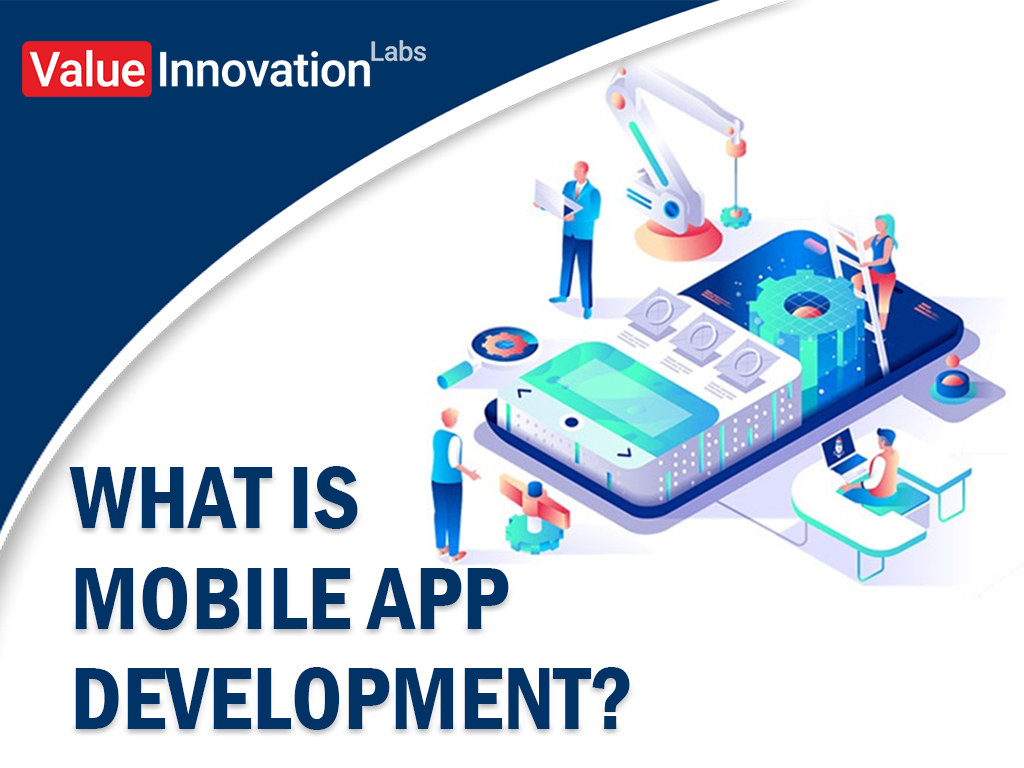
What is Mobile App Development?
- by Nisha Bharti
Mobile application development is the process of developing a software application that runs on a mobile device. The mobile application uses a network connection to work with remote computing resources. This process includes creating software bundles that can be easily installed, implementation of backend services like data access with an API, and testing the application on target devices.
Mobile Applications and Device Platforms
In the modern smartphone market, there are two dominant platforms. The first one is the iOS platform from Apple Inc. which is the operating system that gives power to iPhone smartphones. And the other one is Android from Google which has the Android operating system. It can be used by Google devices and many other OEMs. These will help to build their smartphones and other smart devices.
While building the applications, there are some similarities between these two platforms. The development for iOS vs. Android includes the use of different Software Development Kits (SDKs) with several development toolchains. Apple uses iOS only for their own devices but, Google made Android available for other companies. While shipping the device, Android provides certain Google applications. The developers can build apps for millions of devices by targeting both Android & iOS platforms.
Alternatives of Building Mobile Apps
Four major development approaches for building mobile applications are:
- Native Mobile Applications
- Cross-Platform Native Mobile Applications
- Hybrid Mobile Applications
- Progressive Web Applications
Every approach to developing mobile applications has numerous advantages and disadvantages. The developers select the correct development approach for their projects, such as user experience, computing resources, and more. The native features which are required by the app are the development budget, time targets, and resources available to support the app.
- Native Applications
The developers write a programming language for Native mobile applications. The platform owner provides frameworks and runs directly on both Android and iOS operating systems of the devices.
| Pros | Cons |
| Best runtime performance | High cost while creating & maintaining the app |
| Direct access to device APIs | For every platform, it needs multiple code-bases |
- Cross-Platform Applications
The cross-platform mobile app developers write this in many kinds of programming languages & frameworks. But in the end, they get compiled into a native application that runs directly on the OS.
| Pros | Cons |
| Single code base works on multiple platforms | Dependents on bridges and libraries for native device features |
| Easy to build and maintain your app | Limitation of performance due to bridging |
- Hybrid-Web Applications
It builds with standard web technologies like JavaScript, CSS, and HTML5, and they are packed up as app installation packages. This hybrid app works on a web container which offers a browser runtime and a bridge for native device APIs.
| Pros | Cons |
| Shared code base between web and mobile apps | In comparison to native app, it has a lower performance |
| Uses web development skillset to build mobile apps | Limited support for native device features |
- Progressive Web Applications
PWA is a web application that utilizes some browser capabilities like working offline, running a background process, and adding a link to the device home screen that gives the user experience just like an app.
| Pros | Cons |
| Same app is available for both web & mobile | Limited support for native device features |
| No installation is required, easily accessible via URL | App capabilities depend on the browser in use |
Comparison between Native & Hybrid Applications
See the below table which tells you the four main ways that how native apps are different from hybrid apps:
| Native App | Hybrid App |
| Platform specific | Cross platform |
| Compiled language | Scripting/compiled |
| Access to device hardware | Plugine/native modules |
| Platform frameworks | Web frameworks |
Why you should select the Hybrid/Cross-platform Approach?
One of the issues with native mobile application development is that it needs a highly specialized skill set. The languages which are mainly used for native development are from large and vibrant developer communities are Swift and Java. There are only a few developers who know the platform-specific versions of these languages and their respective IDEs.
Lifecycle of Mobile Application Development
There are two interlinked core components of a mobile application:
- The mobile application “Front-End” resides on the mobile device.
- The services “Back-End” supports the mobile front-end.
Mobile application development is the process of developing a software application that runs on a mobile device. The mobile application…
